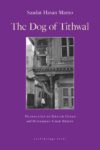The following is from the latest issue of the Full Stop Quarterly. You can purchase the issue here or subscribe at our Patreon page.
You tore into our land
—Abeeda Talukder, “Dividing Line”
a crooked line.
That morning
we learned: the dawn
had been bitten by moths,
flying in droves, in madness
towards light. Unsure of the nature
of light, they had consumed
everything.
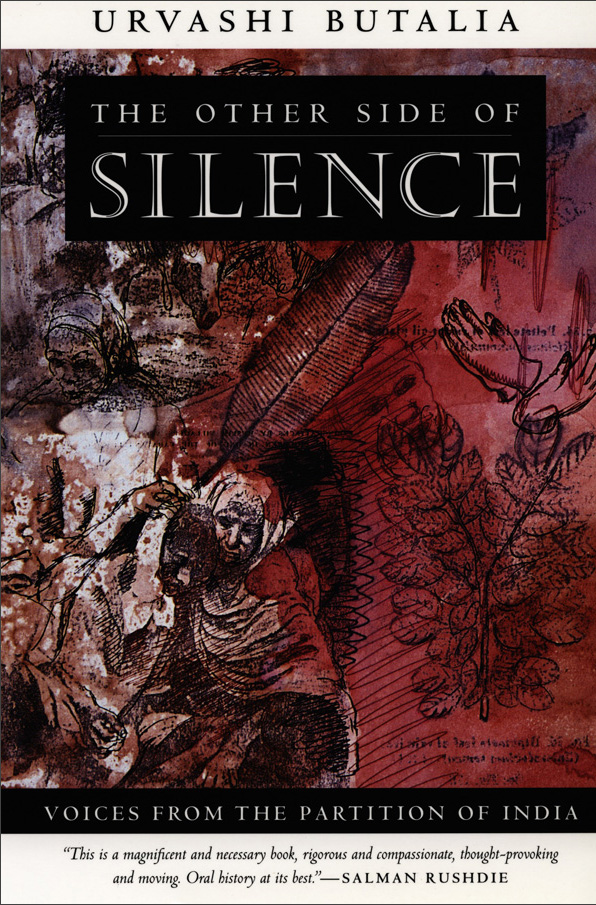
In Urvashi Butalia’s landmark contribution to the field of Partition studies dedicated to chronicling individual remembrances of trauma, The Other Side of Silence (1998), she observes the collapse of the conventional victim-aggressor dichotomy that contributed to the confusion of Partition: “There had been, at Partition, no ‘good’ people and no ‘bad’ ones; virtually every family had a history of being both victims and aggressors in the violence.” Yet, despite the turbulence and bloodshed that defined Partition for so many, scholars have noted the not insignificant gulf between the state-sanctioned nationalist historiography of Partition and Partition as it is remembered in oral testimonials by those who survived its anarchy or by their descendants. Arguing against the nationalist narrative that intended to separate the concept of Partition from violence, Gyanendra Pandey states in Remembering Partition that “Partition was violence.” The lived realities of everyday people were peripheral concerns to be overridden by the grander scheme of nation-building.
The 1920s and 1930s saw the emergence of distinct political identities conceived in religious and ethnic terms in congruence with nationalism; this development was aided by two major parties, the Indian National Congress and the All-India Muslim League. As Dietrich Reetz suggests in his essay “Ethnic and religious identities in colonial India (1920s–1930s): a conceptual debate,” the rising notion of nationalism was soon inextricably tied to religion. The British had long established their rule upon the foundation of divide et impera, and communal tensions within the subcontinent intensified when the Congress (with an investment in largely Hindu interests) emerged victorious in the 1937 provincial elections. Jawaharlal Nehru (the leader of the Congress, who later became the first Prime Minister of India) dismissed the notion of the Muslim League forming any manner of coalition with the Congress ministries, and maintained that there would be only two parties in India: the Congress and the Raj. Muhammad Ali Jinnah had previously been a notable member of the Congress, and he made several attempts to safeguard Muslim rights (such as through his “Fourteen Points” reform plan which was rejected by the Congress), but grew disillusioned by the lack of support for his vision. In 1940, he made the first formal articulation for a separate state for Muslims in his presidential address to the Muslim League at Lahore. Drawing from the conception of the two-nation theory, Jinnah stated that “Hindus and Muslims brought together under a democratic system forced upon the minorities can only mean Hindu Raj,” and that Muslims “must have their homelands.” Following the Lahore Resolution of 1940, the notion of a separate state for Muslims, or “Pakistan,” gradually became a matter of public discourse, although Muslim leaders themselves did not consider it to be a legitimate demand.
Several negotiations were undertaken between 1945 and 1946 to organize the transfer of power from British hands to independent India. The issue of Pakistan was repeatedly forced to the fore as the cumulative breakdown of Hindu-Muslim relations in recent years seemed to have eliminated the likelihood of a single, unified Indian state. In retrospect, the fact that Partition eventually became a reality was baffling to many. In 1946, there were protests in Calcutta and Bombay, and in the winter elections, the Muslim League emerged as a force to contend with and a dominant representative of Muslim interests. Although this was never fully tested democratically, as the Congress was still receiving support from financially underprivileged Muslims, the League’s demand for Pakistan was now accepted.
In 1946, the Calcutta Killings on Direct Action Day (August 16, a strike demanded by the Muslim League to highlight its demand for Pakistan) spurred riot after riot, from Bombay and Noakhali to Punjab and Bihar. By August 19, there were at least four thousand casualties in Calcutta itself, with ten thousand injured. The British deployed the army only after twenty-four hours. The Calcutta Killings were followed by violent riots in Noakhali and Bihar. Thus, the pre-Partition months were fraught with bloodshed and interminable conflict, abetted by passive British leadership. The Congress, too, was hardly impermeable to Hindu bias, especially in the face of such unmitigated violence. Partition had now become an unavoidable reality.
On June 3, 1947, as per the Mountbatten Plan, it was announced that the transfer would take place on August 15. Even when this was announced on the radio, many people living in rural areas were totally unaware of this development. Boundaries were drawn in the Bengal and Punjab provinces by Cyril Radcliffe, who was largely ignorant of the subcontinent’s geopolitical and georeligious realities. On August 15, the freedom that dawned with Nehru’s midnight speech would deliver also an unimaginable human rights disaster characterized by large-scale violence—from rioting and looting, to rape, destruction, murder, and widespread displacement.
•
It is possible to separate the several complicated political entanglements that facilitated the violence of Partition, but what may be considerably more elusive when brought under the lens of analysis is the disturbing human element that looms large in most narratives of Partition. Hindus, Muslims, and Sikhs, who had previously lived together (if not always in ideal circumstances, yet in relative peace) in close-knit communities, cognizant of their religious differences but neutral and even friendly, were now in open warfare. Religious minorities grew suspicious of the rising notion of national Hindu domination. Aside from this, certain underprivileged sections of society became targets of greater aggression during the tumult. Therefore, the barriers that separated the precarious nexus of social and religious systems crumbled in the mass overhaul brought about by Partition. Here it is necessary to consider how the notion of dehumanization mediated attitudes towards the other, and provoked the outbreak of large-scale rioting and violence.
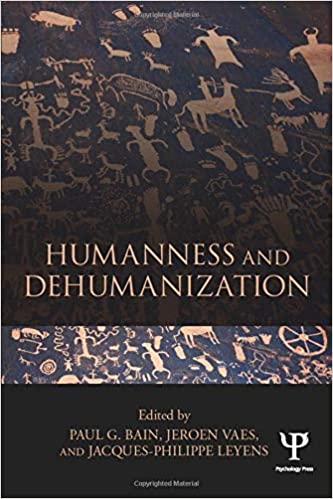
The term “dehumanization” has long been a subject of interest across disciplines where it is seen as a driving factor that enables violence, especially in the cases of genocide and war. In the opening chapter of Humanness and Dehumanization edited by Bain et al., they state that we can “learn a lot about humanity when looking at its violations.” The long anthropological history of dehumanization in the West has been considered by psychologists like Gustav Jahoda, who noted that deep-rooted cultural tropes of the racial other, reimagined as animalistic, have fed into modern notions of racial dehumanization. In considering the word “dehumanization” itself, David Livingstone Smith in Less Than Human describes it as akin to “removing the human-ness”, or the belief that “some beings only appear human, but beneath the surface . . . they aren’t human at all.” Nick Haslam, a major scholar in dehumanization studies, provides a dual understanding of dehumanization with reference to two factors: human uniqueness (where humans are contrasted with animals, as they possess agency) and human nature (where humans are contrasted with machines, as they possess experience). As such, animalistic dehumanization is the erasure of those qualities which are unique to humans (moral sensibility, higher cognition, civility), while mechanistic dehumanization is the erasure of those qualities which are integral to human nature (emotionality, openness, interpersonal warmth). Dehumanization is largely targeted by an ingroup towards members of the outgroup.
Official records of Partition, though not always reliable, provide the staggering numbers. At the time, the population of British India was around 400 million. The violence of Partition resulted in a million casualties, although researchers have argued that it may well be double that. It also forced a mass exodus, as an estimated twelve million people were compelled to move across the newly-drawn borders. While the wealthy were able to migrate fairly smoothly, for most people who were forced to abandon their homes, the journey, made on foot in kafilas or in bullock carts, trucks, cars, or trains, was much more treacherous. Migrants were often targeted by gangs, while reports of the violence wreaked in train compartments which resulted in trains piled with dead bodies pulling into stations became, as per Navdip Kaur (in his essay “Violence and Migration: A Study of Killing in the Trains During the Partition of Punjab 1947”), “totemic” images by which we recognize the consequences of Partition. In Punjab, an epicenter of Partition violence, in the three months that followed Partition, 673 refugee trains carried as many as 2.8 million refugees between borders. Aside from this, looting and arson were widespread, as was the abduction and rape of women; occasionally, women were even raped by men of their own religion. Women were murdered or compelled to commit suicide as an act of “martyrdom” by men in their own families so they would not be “dishonored” by men from another community. This large-scale systemic violence may seem difficult to rationalize, and stems, at least in part, from how the other or the outgroup was viewed. Referring to World War II, David Livingstone Smith (in Less Than Human) is of the opinion that it may have been against the cultural-moral code to kill human beings, but to the Nazis, Jews were “dangerous, disease-carrying rats,” and therefore, they were justified in exterminating these “rats.” He describes how dehumanization was in turn directed towards the Germans by Soviet propagandists such as Ilya Ehrenburg, who referred to the Germans as “two-legged animals.” Ehrenburg wrote, “Do not count days; do not count miles. Count only the number of Germans you have killed . . . Do not waver. Do not let up. Kill.” It is under the influence of this tenet of dehumanization that Russian forces would later invade Germany and perpetrate horror upon horror. Smith suggest that while it is simpler, even comforting, to view the Holocaust as an “aberration,” this line of thinking is dangerous, because the Nazis were not monstrous creatures, but ordinary human beings; they had simply totally dehumanized the other. The consistent need to see people (specifically the outgroup) as animal-like strips them of what Haslam called “human uniqueness” or the agency that separates human beings from animals. Recalling a particularly brutal memory from the Partition days where a man was tied to the back of a horse and ridden to death, Dr. Malvinder Pal Singh stated in an interview (in Scroll in 2019) that “they had all become animals.” While what Singh witnessed is indisputably brutal and must have involved an act of cognitive dehumanization on the part of the aggressors, the larger narrative that such violence was performed only by those who had turned animal-like in a moment of frenzy functions as a form of dehumanization in return. Some might argue that this is a metaphorical use of language that should not be taken at face value, but Smith has stated that language is, after all, a front for the thought process. When language is used to indicate that the outgroup is sub-human, that can be identified as the process of dehumanization at work.
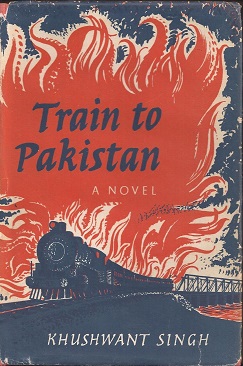
Partition literature has proved to be integral to understanding and memorializing the human tragedy that haunts two nations. Khushwant Singh’s renowned novel (the first Partition novel in English), Train to Pakistan (1956), interrogates the various communal anxieties at work in the small village of Mano Majra in Punjab, where Sikhs and Muslims have thus far lived in harmony. The relative peace of the remote village, where news of larger national developments is slow to reach, is ruptured, first by a murder, and then by the arrival of a “ghost train” (laden with dead bodies) from Pakistan. Desperate to drive the Muslims of Mano Majra out of India to the new Pakistan in order to prevent an outbreak of violence in the village, the district magistrate Hukum Chand attempts to sow seeds of tension between the Sikh and Muslim communities. Train to Pakistan examines several aspects of dehumanization, some clearly recognizable, and others more abstract. Hodson et al. (Humanness and Dehumanization, ch. 6) have argued that in order for dehumanization to occur, it is crucial that there is a social categorisation into us versus them, along with a sense of personal identification with the ingroup. Additionally, it is often stereotypically assumed that the ingroup places a greater premium on prosocial values, while the outgroup sees values that promote their communal position as more important, which contributes to the ingroup’s dehumanizing perception.
While several stereotypical examples of dehumanizing language and slander are bandied about in Train to Pakistan, the us versus them binary is what brings to light a dehumanizing perception, and quick to follow is the prospect of violence. Hukum Chand deliberately plays upon latent communal anxieties by ordering the police to suggest that the murder committed in the village was the work of a Muslim gang. Chand’s plan, combined with the piecemeal news of wider tensions that the village has been receiving, pushes the villagers into a state of mental frenzy. It splits the village into two “as neatly as a knife cuts through a pat of butter.” Muslims are left to ponder the many crimes they have heard Sikhs commit, of mosques being desecrated and of pigs slaughtered within, of copies of the Quran being torn into pieces. They begin to think of their Sikh neighbors as “barbarous” strangers with “evil intent,” and the notion of Pakistan acquires greater meaning for them, as a place of refuge without Sikhs. In turn, the Sikhs of the village turn to their own religious heritage and revisit how the last Guru had warned against Muslims and their disloyalties. They cannot forget the train carrying Sikh bodies sent from Pakistan, which were cremated in their village. As the us versus them divide stabilizes, it becomes impossible for either side to refuse a deep sense of personal identification with the respective ingroup, and religious identity becomes paramount in response to perceived danger. The fact that the ingroup sees the outgroup as possessing a different value system (with significantly less respect for altruistic values) is also seen in how both the Muslims and Sikhs embrace a dehumanizing perception to envision the other community as a mob of murderers and rapists who have no respect for sociomoral values. Hukum Chand’s strategy to divide the two communities also sets in motion a larger communal dehumanization. In referring to motivational reasons for dehumanization, Hodson et al. (Humanness and Dehumanization, ch. 6) use established research to argue that mortality salience (or the fear of mortality) can enhance ingroup humanization. Therefore, not only do the two communities grow further apart, they also fully embrace their imagined roles within their specific ingroup, and they place greater value on their relationships with others in their own community. Hodson et al. also go on to state that another aspect of motivational dehumanization is that those who are seen as dehumanized (rather than neutral or humanized) are subject to greater violence. In Train to Pakistan, the patriarch of the only Hindu family in the village, the moneylender Ram Lal, is murdered in the opening chapter by a gang of Sikh dacoits. However, they do not harm the women and children in Lal’s house. The same gang will later lead the charge when it comes to derailing an entire Muslim train, and although this plan never fully comes to fruition, it is not for lack of trying. The dehumanized group in this scenario (Muslims) is almost subjected to much greater violence than the Hindu Ram Lal and his family, who are seen as humanized. Thus, two aspects crucial to dehumanization as per Hodson et al., behavioral (us versus them and social identification) and motivational (mortality salience and increased violence towards the dehumanized), can be seen to encourage violence in Train to Pakistan, and it can also be argued that these were integral in providing psychological stimulus to the larger patterns of communal violence during Partition.
The communal fissures in Mano Majra are somewhat repaired by the fact that the Sikhs later swear to protect their Muslim neighbours, but knowing that they would not be able to put up a defense if outsiders were to attack the village, the Sikhs tearfully say farewell to the Muslims as they leave for Pakistan. However, this illusion of something akin to a reconciliation is shattered when a Sikh gang demands that the Mano Majra Sikhs provide assistance, as they plan to derail and shoot at a train carrying Muslim passengers (including the Mano Majra Muslims) to Pakistan. The gang leader uses language that is chillingly empty of emotion; it can be argued that he motivates his own community through dehumanization (referring to them as “impotent” and as “eunuchs” who lack courage), and his brutal rhetoric urges them to join him, a rhetoric reminiscent of the Soviet pamphlets: “For each Hindu or Sikh they kill, kill two Mussulmans. For each woman they abduct or rape, abduct two. For each home they loot, loot two. For each trainload of dead they send over, send two across.” Scholars have agreed that should the victim face dehumanization, the aggressor too is often caught in the trap of self-dehumanization, as well as being further dehumanized by others, creating a cycle of dehumanization (and possibly a cycle of violence). Returning to Haslam’s theory on the two aspects of dehumanization (animalistic and mechanistic), it can be noted that the gang leader refuses to ascribe individual identities to the Muslims when it is indicated that some of them are from Mano Majra. Instead, he methodically deindividuates them by exclaiming that he does not know who the Muslims on the train are, nor does he care. It is “enough . . . to know they are Muslims.” He therefore perceives them as totally stripped of any individual, differentiating features, viewing them purely as a dehumanized collective. In an extreme form of mechanistic dehumanization, they are seen as interchangeable and without any individual value as human beings; simultaneously, the leader portrays himself as cold, calculating, and emotionless, solely focused on the task of systematic killing, which may be read as mechanistic self-dehumanization. Convinced by his argument and cowed by his insults, several of the villagers therefore become amenable, not just to allowing the murder of their neighbours (to whom they had previously professed brotherhood), but to actively participating in it. The gang leader rallies a mob, and this anonymity offers a comfort that makes it easier for the villagers to participate in both dehumanization and the collective plan of violence.
Thus far, the instances that prove dehumanization processes at work range from negative to downright dangerous for members of the outgroup. However, Train to Pakistan also offers another dimension to dehumanization which proves that, under specific circumstances, dehumanization may be an appropriate defense in the face of trauma. Jacques-Philippe Leyens (Humanness and Dehumanization, ch. 10) paraphrases Haque and Waytz to suggest that “dehumanization in medicine justifies acts that would be considered harmful.” In the field of medicine, certain dehumanizing practices (such as deflecting morality and decreasing empathy levels) can be conducive because they allow medical professionals to maintain a certain amount of distance from patients that is necessary to keep their stress levels manageable. In certain situations, dehumanization becomes crucial, such as when a surgeon must view the human body impersonally. However, Leyens also states that research has proven that when doctors report a loss of empathy, they are more inclined to make medical errors in the future. Singh’s novel briefly explores how trauma pushes corrupt bureaucrat Hukum Chand to (further) dehumanize the Sikhs who were murdered on the “ghost train” from Pakistan. While Chand disinterestedly watches the bodies brought out, he is unable to see them as anything more than “trunks or bedding,” and cannot summon up any empathy for them. This is understandable to some extent, but any sympathy for Chand is swiftly undercut by the fact that his response to his lack of empathy does not propel him toward any kind of public service. Although he has nightmares of the tableau of death that confronted him on the train, he is not specifically concerned with the cost paid in human suffering. His dehumanizing perception does not mature into a learning experience for him, but instead impels him to react callously to intimations of further violence. When it is reported that a mob is planning to attack the train bound for Pakistan, he responds by saying that there is nothing to be done, but a police report should be written. He chooses only to preserve his own livelihood. Leyens, with reference to medical dehumanization, proffers an ideal middle ground where medical personnel should approach every patient with the dignity they deserve as human beings, and with moderate and manageable levels of empathy. This is what Hukum Chand fails to do; he refuses to reflect on his personal experience with dehumanization, and his actions in the future represent how the dehumanizing perspective dominates his outlook. As a Hindu in a position of relative privilege, he represents those who simply chose to look the other way.
•
With several Hindu leaders still of the opinion that Pakistan would be a short-lived reality, and that India would soon become one nation again, the Congress formed an interim government in August 1946. Pakistan formed a new government directly, with little to no administrative setup. The Indian interim government was concerned primarily with the practicalities of transfer of power, and did little to prevent the outbreak of violence. As Daniel P. Marston notes (in his essay “The Indian Army, Partition, and the Punjab Boundary Force, 1945–1947”), leaders looked to the Indian Army, hoping that issues of large-scale violence would be dealt with. When violence broke out in 1946, particularly in Calcutta (in February and August), the death toll had already climbed quite high before the army was called in. There were also growing suspicions about how communal tensions would affect the army, and ranks thinned to 800 thousand by October 1946, with a further decline in numbers anticipated, as several experienced officers were no longer part of the force. A number of paramilitary forces participated in communal violence, and senior officers suspected that former soldiers (particularly Sikh jathas in the Punjab region) had obtained military arsenal for their own use. Additionally, the fact that the army needed to be divided along communal lines was a major organizational issue. Marston notes that while there was a great deal of confusion among the ranks (several Muslims were rejected from the new Indian Army, while Hindus were similarly not welcome in the independent Pakistani Army), official records maintained that the soldiers remained unaffected by communal tensions. In July 1947, the Punjab Boundary Force was set up as a precaution, but as the violence escalated, there were issues with the collapse of the police forces, as many reports stated that they were actively participating in violence (an Indian officer believed that the police “were deliberately organizing the whole affair”). Governor Jenkins of Punjab was particularly concerned about the unreliability of the police in Lahore and Amritsar, writing of “serious indiscipline at the recruiting training center” in his report. Animosity on the part of law enforcement led to a public backlash, and people no longer had much faith in the police or the army.
To some extent, records that are available seem to present an official bias, and literary narratives allow for a harsher examination of the army’s role in facilitating violence. In a particularly scathing short sketch by Saadat Hasan Manto called “Nigrani Mein” (or “Due Supervision,” as translated by Khalid Hasan), two characters, A and B, converse with soldiers, who reveal to them that “three dead bitches were found floating in the canal.” Manto is deliberately ambiguous about the use of the word “bitch” in this context, but the rather potent suggestion is that the soldiers might well be referring not to dogs but women from a different religion. When A inquires as to what the role of the military is in this situation, the soldiers respond tellingly with, “But of course, everything is done under its due supervision.”
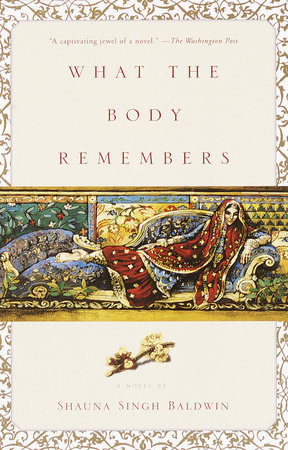
In Shauna Singh Baldwin’s novel centered on the lives of two Sikh women married to one man in What the Body Remembers (1999), on the brink of independence, Roop (one of the protagonists) leaves Lahore for the relative safety of Delhi. The second wife of Sardarji, a wealthy engineer who sends her ahead by a car which breaks down, Roop is forced to wait out a mechanical failure with her children and her Muslim servant Jorimon. The sudden arrival of a lorry of Muslim soldiers who have been gradually “descending to disorder” and raiding villages, exhibits how the uniformed could commit crimes with impunity. Baldwin describes how the soldiers “amuse themselves,” dragging Sikh and Hindu women away, shooting at refugees, and performing forced conversions. Having hidden the children in a nearby field, Roop and Jorimon confront the soldiers in their car. Roop heavily relies on the hope that Jorimon will not betray the knowledge that she is a Sikh. When the subedar (the leader of the ragtag gang of soldiers) questions their Muslim identity, stating that their faces are shamefully uncovered and that they appear to be Hindu women, Jorimon’s response angers the soldiers, and she is pulled out of the car and attacked by men “grunting like animals in the dark” (this shows, in some ways, the omnipresence of dehumanized and dehumanizing perspectives in language) with the subedar urging them to teach her a lesson. It is Roop’s loud and repeated insistence that her brother works in the army that ultimately prevents the soldiers from raping Jorimon, although the women are warned that they should be grateful to be spared: “Next time you may not be so lucky.”
As noted in Hetey and Eberhardt (Humanness and Dehumanization, ch. 9), uniforms can “promote anonymity and deindividuation”, and they have noted that in prevalent public narratives, the notion of the “animalistic” criminal (or, the “savage” that must be hunted down like an animal, as propounded by father of criminology Cesare Lombroso in the nineteenth century) is pitted against the notion of the “mechanistic” police (symbolising cold, unfeeling authority), recalling Haslam’s binary. These two aspects of dehumanization may therefore work in tandem, and in the case of Partition, it was heavily rumoured that law enforcement agents did not necessarily need to witness unlawful activities to respond with violence towards the “criminal.” In What the Body Remembers, Jorimon is attacked partly because the soldiers have “named themselves teachers of lessons to unbelievers.” They have already decided what “criminality” is, and what its punishment must be, and see it as their duty to mete it out. The fact that they see it as a responsibility allows them to rationalize the violence they perpetrate.
•
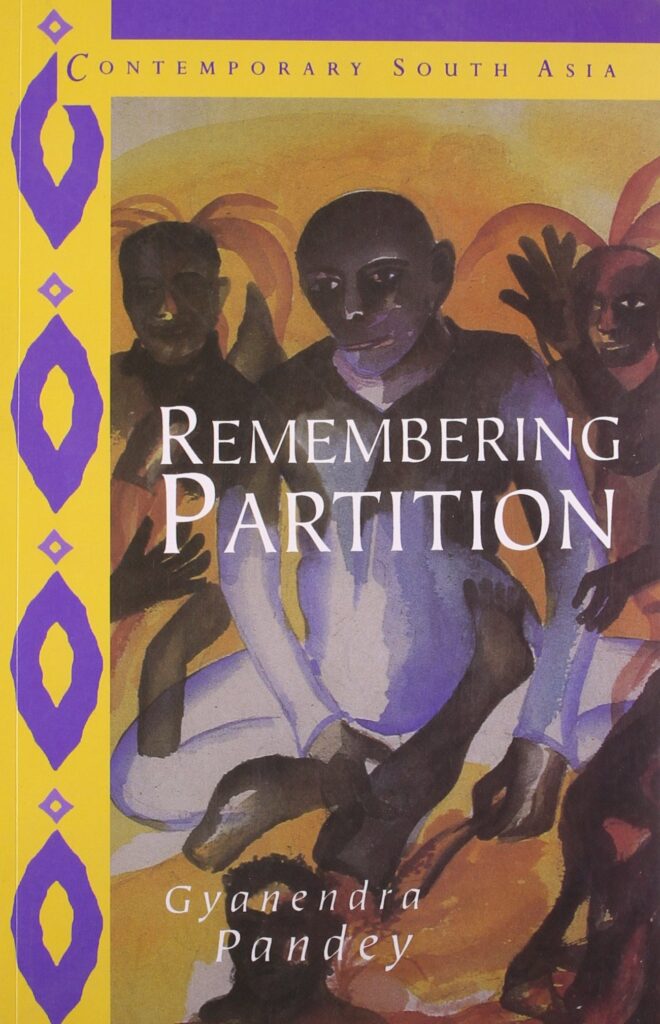
As Pandey notes in Remembering Partition, several observers described the events of Partition as “a war waged ‘especially’ on women and children.” Around twenty-nine to fifty thousand Muslim women and fifteen to thirty-five thousand Hindu and Sikh women were “abducted, raped, forced to convert, forced into marriage, forced back into what the two States defined as ‘their proper homes,’ torn apart from their families once during partition by those who abducted them, and again, after partition, by the State which tried to ‘recover’ and ‘rehabilitate’ them” (as per Urvashi Butalia in her essay “Community, State, and Gender: Some Reflections on the Partition of India”). There were many reports of women (particularly Sikhs) being “martyred,” having chosen or being compelled to commit suicide rather than face the brutality of men from other communities. There were also accounts of women being paraded naked in public, of their breasts being cut off, and of religious symbols of another community being forcibly inscribed onto their bodies. In Thoa Khalsa, twenty Sikh women were killed by their family elders to prevent their “dishonor” at the hands of Muslims, and around eighty women and children committed suicide (by jumping into a well) for the same reason. It is largely accepted that during times of great disorder, the body of the woman becomes the battleground through which domination over the other can be established because the woman’s body is seen not as part of an independent being, but as the property of the male household and of the community. To “dishonor” this body is to defile the “property” of the male other.
In considering how dehumanization intersects with gender, the objectification of women has been conceived of as equivalent to mechanistic dehumanization. Considering sexual objectification separately, its first definition was introduced by Fredrickson and Roberts, where “a woman’s body, body parts, or sexual functions are separated out from her person, reduced to the status of mere instruments, or regarded as if they were capable of representing her” (Vaes et al., Humanness and Dehumanization, ch. 11). According to Vaes et al., this establishes how sexual objectification paves the way for dehumanization, and research has established that when a woman is sexually objectified, she is likely to be dehumanized both by men and by other women. This dehumanization is taken to be mechanistic because to focus only on a woman’s body is to limit her perceived human nature, and when women are sexualized, they are visually perceived as similar to objects (this is based on research by Bernard et al., as quoted in Vaes et al.).
In one of Manto’s most famous short stories, “Thanda Ghosht,” translated as “Colder than Ice” or “Cold Meat,” a Sikh man named Ishwar Singh returns home to his wife in a daze, reporting that he feels strange. Growing increasingly suspicious when he is unable to sleep with her, his wife Kalwant Kaur stabs him with his own kirpan and demands the truth. He confesses that when he took part in the looting of Muslim shops and houses, he broke into a particular house where he killed five or six men, and stole a woman who was “a luscious fruit” (in Hasan’s translation). It is only after he has raped her that he realizes that she is “a heap of cold flesh,” a dead woman. Reputed for capturing the profound immoralities of which humanity is capable, what Manto achieves in “Thanda Ghosht” is twofold. First, the unnamed woman is dehumanized once, for she is dead when Ishwar Singh abducts her. Yet the fact that Ishwar Singh rapes her, entirely ignorant of the fact that she is deceased, because he can only perceive her body in sexual, machine-like terms or in terms of extracting pleasure from it, is another form of dehumanization, which is ironically and painfully complete because her body is now the only thing that exists, and her mind is absent. Ishwar Singh participates in a kind of double, deeply symbolic dehumanization that is played out on the body of the woman, which forces him to confront his own humanity as he exclaims to his wife, “What a motherfucking creature man is!” However, he does not regret the rape itself, but the act of raping a dead woman. Meaningfully, he would rather dehumanize a living woman through violence than attempt to (symbolically) dehumanize a dead woman, because it is only when a woman is alive when she can be reduced to her physical body. The unnamed woman would have lost whatever “honor” her community vested in her when she died, and Ishwar Singh’s assault, in the context of establishing patriarchal and religious superiority, is no act of bravado on his part for which he may be celebrated by his fellow men, rather, it is an act that forces him into a mental crisis. Second, Manto is able to show how performing dehumanization results in self-dehumanization. Ishwar Singh is not horrified by the fact that he is a rapist, but by the fact that he does not notice the woman is lifeless, and that causes him deep mental anguish. He succumbs to his wound, his body “colder than ice.” Manto structures the story such that Ishwar Singh’s dehumanization of his victim in turn neatly leads to his own self-dehumanization, and then his literal dehumanization in death. “Thanda Ghosht” is also a literary exemplar of the nonchalant male approach to violence against women, which partially explains the high statistics of the same during Partition.
A certain type of dehumanization which operates more covertly is “infrahumanization,” as theorised by Leyens et al. (stated in Humanness and Dehumanization), where the ingroup attributes primary emotions (common to humans and animals, such as joy or sadness) to both their own group and the outgroup, but denies secondary emotions (remorse, guilt, hope, and so on) to the outgroup. Infrahumanization complicates the relationship between two women in What the Body Remembers, exhibiting how dehumanization may function in subtle ways, and also how it can be brought about via sexual objectification. In Baldwin’s novel, Sardarji marries Roop because his first wife, Satya, is unable to have children. In the opening chapter, Satya examines Roop’s body almost as if Satya is visually disassembling her, her body a collection of parts. This sets the tone for their acrimonious relationship for much of the novel, as Satya is threatened by Roop’s youth and beauty (dehumanization rooted in sexual objectification). Although Satya is transparently cruel to Roop, this partly stems from her opinion of Roop as trusting and dim-witted, far from an intellectual match for Sardarji. There is a strong element of classism to Satya’s dehumanization of Roop, for the latter is a village girl who brought no dowry to the marriage. Scholars note that there is an animalistic edge implicit in infrahumanization, which is seen in how Satya perceives Roop purely in terms of her reproductive potential (“Satya still needs Roop for what Roop’s body can do”), and does not even consider the mental anguish and anxiety Roop undergoes when she is compelled to “give” her two children to Satya after they are named. Infrahumanization defines Satya’s approach to Roop; as Roop’s body is visually broken down and processed into its separate constituents, so her mind is broken down and reduced by Satya to an animalistic, primary state. She inhabits, in Satya’s scheme of things, an “infrahuman” existence.
Here it might also be relevant to consider another form of passive dehumanization, as outlined by Waytz et al. (Humanness and Dehumanization, ch. 4)—that of the “lesser minds problem.” In contrast to the “other minds problem” (one can never experience another’s mental state), the “lesser minds problem” occurs when one is unable to attribute mental sophistication to others. Indirect methods of inferring how another mind functions create a “systemic bias” where mental capacity in another is less intense, impactful, and objective in comparison to one’s own mental processes. There are several aspects to the “lesser minds problem,” of which “naïve realism” (the conception that one’s thoughts, experiences, feelings, and opinions are an accurate depiction of reality) is particularly applicable to Satya’s attitude towards Roop. Satya’s conflict-ridden relationship with Roop is defined by the fact that she thinks she knows who Roop is. A larger historical application of the “lesser minds problem” may be seen in how both India and Pakistan conducted “recovery” missions for the women who had been abducted or displaced during Partition. These women were not given much say, partly because they were considered to be “communal and national property” (as Pandey states in Remembering Partition) to be traded between borders, and partly, it can be assumed, because the States believed they knew what was best for these women.
The notion of “martyrdom” that compelled women to commit suicide was a particularly grim consequence of Partition. In the final chapters of What the Body Remembers, Roop is reunited with her father and her brother Jeevan in Delhi in September, 1947. When she asks after Kusum, Jeevan’s wife, Jeevan narrates how their village of Pari Darvaza (where Muslims, Hindus, and Sikhs had previously lived together peacefully) was deserted when he arrived. He discovers Kusum’s dismembered body in their house. Kusum’s stomach has been ripped out, and he understands what her attackers wished to communicate: “We take the womb so there can be no Sikhs from it.” While Kusum has no doubt been violently dehumanized by her attackers, she is symbolically dehumanized again in death by her husband, who cannot look beyond her reproductive potential. In due course, Roop interrogates her own father about his escape from Pari Darvaza. He tells her the Muslims formed a mob and attempted forced conversions. Roop’s father, having refused to convert, realized that if he left with the women of the household, they would be handed over to the Muslim mob. Speaking of Kusum, he tells Roop, “I cannot endure even the possibility that some Muslim might put his hands upon her . . . I have been hearing that the seeds of that foreign religion were being planted in Sikh women’s wombs.” It is clear in his narration that while Kusum agrees that she must be “martyred,” she is not presented with a choice; it is what Roop’s father sees as his duty to do. When Jeevan arrives later, his father has fled and a mob has dismembered Kusum’s body, but she had already died at the hands of her father-in-law. The painful kind of dehumanization that operates here is largely mechanistic: Both Kusum’s father-in-law and her husband see the potential of her womb before they see her as an individual.
In a historical mirror to this narrative, Butalia (in The Other Side of Silence) interviewed a woman named Basant Kaur from Thoa Khalsa, where she was one of the many that jumped into a well. The well was crammed with bodies, and she was eventually pulled out. Later, when Butalia interviewed Basant Kaur’s son, Bir Bahadur Singh, he mentioned his mother’s name in relation to the fact that she survived when she attempted to commit suicide, but did not specify that she was his mother. Butalia inferred that because his mother had escaped death, she was not honorable, unlike the women who had given their lives for their community. These narratives, both based in reality and drawn from it, exhibit how objectification and dehumanization operate dangerously in conjunction, and how these processes culminate in the kind of violence that was weaponized against women during Partition. This violence, as Pandey notes in Remembering Partition, was glorified and valorized at the time. The “sacrifice” of women in one’s own community was seen as a mark of pride, while the rape and abuse of women of another community was cause for celebration.
A minority community often excised from Partition history is that of the scheduled caste, or the Dalits, the “untouchables” in the Hindu caste hierarchy. The age-old societal oppression faced by Dalits is a matter of contemporary relevance, as their invisible but essential menial labour (scavenging, waste disposal, cleaning toilets, and so on) was forced upon them by the structure of caste. Disturbingly, dehumanization stretches to its very depths in the case of Dalits. In her interviews with Maya Rani (a Dalit sweeper) as documented in The Other Side of Silence, Butalia notes that she was protected by her “casteless” status. Maya Rani’s invisibility was so utterly complete that she was not considered a part of Hindu society, and therefore, was never in any danger. This kind of total erasure of human identity was also granted by the nature of their work. According to Butalia, a dead landlord may be easily replaced; it is harder to find a ready replacement for someone who cleans your toilets.
•
A tendency that runs through several Partition literary narratives is that of senselessness, irrationality, and in some cases, a state of neurosis or mental disorder. Narratives that portray various degrees of mental disbalance may be seen as drawing from the total disintegration of sociomoral and sociocultural norms, as well as that of logicality. The psychological confusion that came with Partition may be read as being cathartically exhumed by projecting such anxieties into the domain of mental illness. It may have been easier to rationalize unreason through an existing model of dehumanization, for mental illness has always been a subject that is relegated to the fringes of societal discourse.
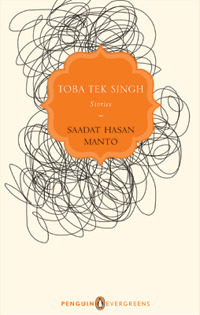
(Originally 1955)
Another well-known short story, Manto’s “Toba Tek Singh”, is set in an asylum that is subject to a decision made by India and Pakistan, where they are to trade inmates. While the story can be taken as a comment on geopolitics due to the fact that Toba Tek Singh suffers both physical and mental dislocation and it is unknown whether his home is in India or Pakistan (he ultimately dies on the border between the two nations), the roleplay the asylum inmates engage in (which is characterized by a kind of insanity) testifies to how mental disbalance could be used (if problematically) to better comprehend the disorder of Partition. It is through the analysis of certain situations that feature an absence of mainstream logic that the absurdity of the outer world could be more easily comprehended. In “Toba Tek Singh,” the inmates, on learning of the existence of a new nation called Pakistan, are perturbed and react in various ways, but even these reactions, which are not portrayed as acts of logic, are influenced by communal sentiments. The nature of communal anxiety loomed so large in the narrative of Partition and resulted in such blatant and widespread dehumanization that it had to be processed through a kind of mental distancing (by examining it through madness) as well as mental dissociation.
This can be seen in another of Manto’s stories called “The Return,” where it is revealed that a kidnapped girl, Sakina, was not just raped by her kidnappers, but also her “rescuers” who bring her back to her father. When the doctor at the hospital camp casually tells her father to “open it” (referring to the window), Sakina instead begins to mechanically unfasten her clothes and part her thighs. Sakina’s total psychological dissociation from reality as a result of trauma reflects, in a sense, the larger condition of post-Partition dehumanization. Literary narratives explore mental disbalance as a metaphor partly because it is already subject to dehumanization, and as an antithesis to mainstream logic, it creates an avenue by which one can relate to larger processes of dehumanization in the outer world.
Krishna Sobti stated that “Partition is difficult to forget but dangerous to remember.” This is certainly true of how two nations have since constantly struggled to grapple with the terror and trauma of what was both perpetrated and endured, and the dehumanizing processes that people engaged in which led to countless acts of violence. The insidious malleability of dehumanization sheds a great deal of light on ingroup-outgroup tensions. Recent events in India, such as the declaration of the Citizenship Amendment Act (2019) and the Delhi pogrom (2020), both of which indiscriminately targeted Muslims, demonstrate the necessity of examining how dehumanization plays into how we view, condone, and incite violence. What began as a psychological process of otherization led to a cataclysmic event defined as much by genocide as it was by freedom. In tracing dehumanization through the disordered events of Partition, it must be acknowledged that otherization has and will continue to exist unless it is actively opposed, and that a major political event forced existing currents of intergroup conflict into the dreaded battlefield of open warfare.
Lakshmi Mitra is a postgraduate student of literature living in India. Her book reviews have appeared in The Rumpus and The Wrangler.
Sudeshna Nag is a postgraduate student of History, a researcher, and a translator living in India. She has worked with the Partition Museum and the University of Queensland sponsored LEAP-CP (Learning through Everyday Activities with Parents-Cerebral Palsy) program.
This post may contain affiliate links.







